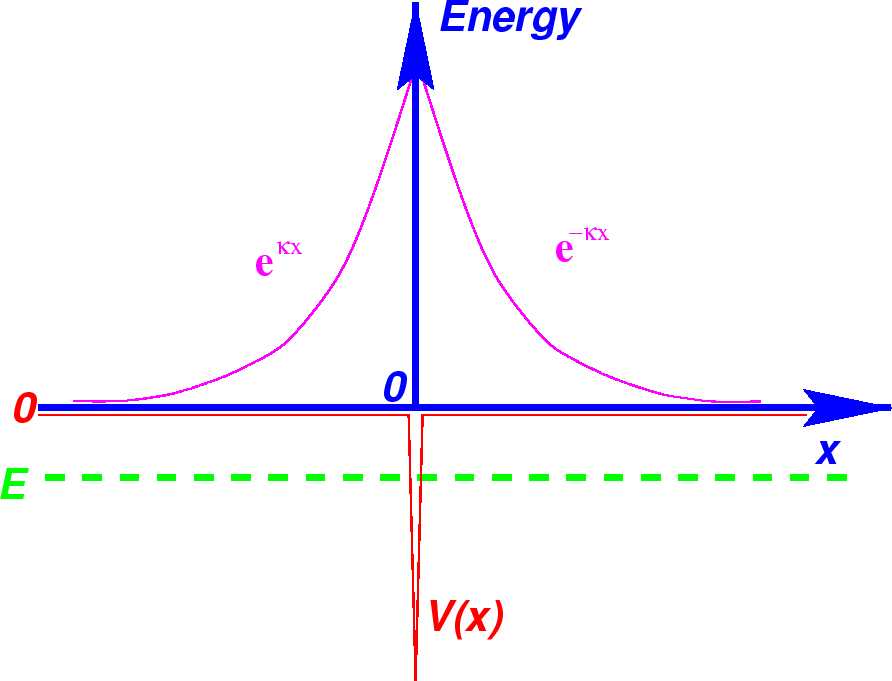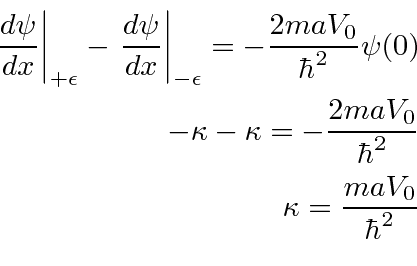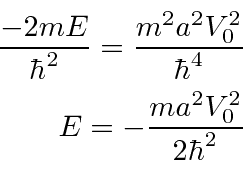Next: The Delta Function Model Up: One Dimensional Potentials Previous: The 1D Harmonic Oscillator Contents
Take a simple, attractive delta function potential and look for the bound states.




We now need to meet the boundary condition on the first derivative at
![]() .
Recall that the delta function causes a known
discontinuity in the first derivative.
.
Recall that the delta function causes a known
discontinuity in the first derivative.


There is only one energy for which we can satisfy the boundary conditions. There is only one bound state in an attractive delta function potential.
Jim Branson 2013-04-22